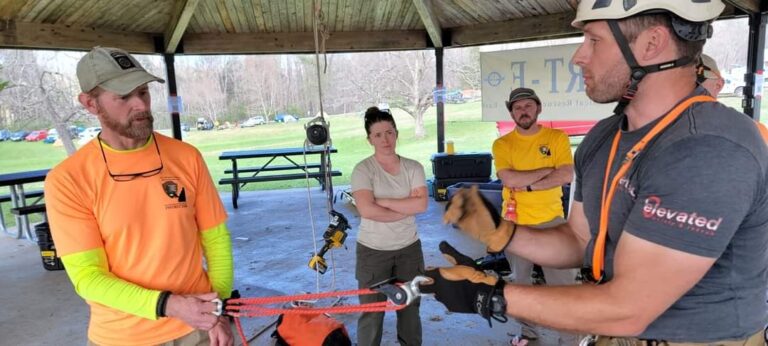In the demanding realm of rope rescue and rigging, where lives often hang in the balance, the clear distinction between coaching and training emerges as a vital lifeline. While training lays the foundation for essential knowledge and skills, it is the coaching that breathes life into these competencies, transforming them into adaptive and finely-tuned instruments in the hands of rescue professionals.
The distinction between the two is not merely semantic; it is the difference between knowing the ropes and mastering them. In this high-stakes world, where the unforeseen challenges of real-life situations can be as intricate as the web of ropes themselves, both training and coaching are indispensable.
Training provides the fundamental expertise, while coaching hones that expertise into the precision required for success. In the crucible of rope rescue and rigging, where every decision and action can be a matter of life or death, the synergy of these two approaches is not just advantageous—it is absolutely essential.
Let’s break down the differences between coaching and training in these contexts:
Training:
- Structured Learning: Training typically involves a structured curriculum, which may include theoretical knowledge, practical skills, and hands-on exercises. This could encompass topics like knot tying, equipment usage, anchor selection, and safety protocols.
- Certification: Many rope rescue and rigging disciplines require formal training to achieve certifications, such as NFPA 1006 (Standard for Technical Rescuer Professional Qualifications). These certifications often involve passing written and practical exams.
- Safety Emphasis: Training places a strong emphasis on safety procedures and protocols. Trainees learn how to operate equipment safely, follow industry standards, and conduct risk assessments.
- Technical Skills: Training focuses on building technical skills, such as rope work, mechanical advantage systems, and ascending/descending techniques. These skills are essential for effective rope rescue and rigging operations.
- Group Learning: Training often takes place in group settings, with instructors providing guidance and evaluation. It’s typically more formal and may be delivered by certified trainers.
Coaching:
- Skill Development: Coaching is more focused on individual or team skill development. It can occur after formal training and aims to refine and enhance specific rope rescue and rigging skills.
- Feedback and Improvement: Coaches provide ongoing feedback and guidance to help individuals or teams improve their performance. This feedback may relate to techniques, decision-making, or communication.
- Application in Real Scenarios: Coaching often involves applying learned skills in real or simulated rescue scenarios, enabling participants to adapt and improve their skills in practical contexts.
- Problem Solving: Coaches help individuals or teams develop problem-solving abilities, which are crucial in complex rope rescue and rigging situations. They teach how to adapt to changing conditions and make sound decisions under pressure.
- Customization: Coaching can be customized to address specific weaknesses or areas for improvement identified during training or real-world incidents.
In the context of rope rescue and rigging, both training and coaching are essential. Training provides the foundational knowledge and skills, while coaching helps individuals and teams refine their abilities and adapt to the ever-changing challenges of rope rescue situations. These distinctions apply to various sectors like the fire service, search and rescue, industrial rescue, and confined space rescue, as the principles of rope rescue and rigging are applicable across these domains.
Peace on your Days
Lance









